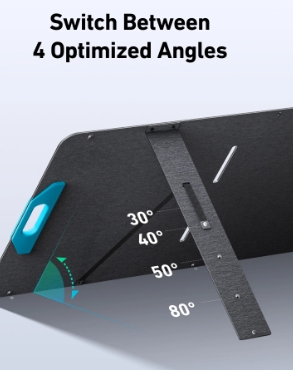Can Solar Panel Power Banks Really Replace Traditional Chargers?
Growing interest in sustainable energy sources is driving a significant change in the way consumers approach charging their devices. Solar power banks are increasingly being considered for their potential to provide off-grid power, particularly for outdoor enthusiasts and those in remote locations. But are these devices ready to take on the role of traditional chargers? In this article, we explore the advantages, performance comparisons, and limitations of the solar panel power bank to help determine whether they can serve as a viable replacement for conventional charging methods.
The Advantages of Solar Power Banks Over Traditional Chargers
Energy Independence and Off-Grid Charging
One of the primary benefits of solar power banks is energy independence. Unlike traditional chargers, which rely on being plugged into an electrical grid, solar power banks can provide power as long as the sun is shining. This makes them an excellent choice for outdoor activities like camping, hiking, or extended travel in remote areas. Whether you’re far from an outlet or in an area prone to power outages, the best solar power banks offer the flexibility to charge devices anywhere and anytime. The Anker SOLIX PS200 Portable Solar Panel, for instance, is designed for portability and offers four adjustable angles to maximize sunlight absorption. This flexibility ensures that no matter where you are or the time of day, you can efficiently harness solar energy to power your devices.

Environmentally Friendly Charging Solutions
Solar power banks are a natural choice for consumers seeking to reduce their environmental footprint. By relying on sunlight—a clean and infinite energy source—they reduce dependence on fossil fuels, which are responsible for a large portion of global carbon emissions. Traditional chargers, connected to the electrical grid, often draw power from coal or natural gas plants, contributing to pollution and greenhouse gas emissions. With an energy conversion efficiency rate of up to 23%, solar power banks like the Anker SOLIX PS200 optimize sunlight capture through monocrystalline solar cells, providing a highly efficient and sustainable energy source. This not only helps reduce reliance on conventional electricity but also supports efforts to combat climate change.
Performance Comparison: Solar Power Banks vs. Traditional Chargers
Charging Speeds and Efficiency
When considering whether solar power banks can fully replace traditional chargers, performance factors like charging speed and capacity come into play. One area where traditional chargers typically excel is speed. Conventional wall chargers are often faster because they deliver a consistent flow of electricity from the grid. In contrast, solar power banks rely on varying sunlight conditions, which can affect charging times. However, solar technology has improved significantly in recent years. Products like the Anker PS200, with its 1.5X higher energy conversion efficiency, capture and convert solar energy at impressive rates, narrowing the performance gap between solar and traditional chargers. Still, in optimal sunlight conditions, solar power banks can compete, if not match, the charging speed of lower-wattage traditional chargers.
Capacity for Multiple Devices
Another important factor is capacity. Solar power banks are often equipped with batteries that store energy for later use, but their capacity can vary significantly based on the model. Traditional chargers connected to an outlet can supply a continuous and steady flow of energy, allowing for the charging of multiple devices simultaneously without much concern for capacity. Solar power banks, while effective for charging smaller devices like smartphones and smartwatches, may struggle with power-hungry gadgets such as laptops and tablets. The capacity and energy output are generally lower. That said, some advanced solar power banks, such as the Anker SOLIX PS200, come with additional features like multiple output connectors, making it easier to charge multiple devices.
Limitations of Solar Power Banks
While solar power banks are undoubtedly a step toward more sustainable energy usage, they are not without limitations. Solar power banks rely heavily on sunlight to generate power, which means they perform best in sunny conditions. In areas where sunlight is scarce, or during seasons with shorter daylight hours, their effectiveness diminishes. Another limitation is storage capacity. While many solar power banks come with built-in batteries to store energy for later use, their total capacity is often lower compared to traditional power banks or wall chargers. This limits their ability to charge larger devices or multiple devices consecutively without frequent recharging from the sun.
Hybrid Charging Solutions: Combining Solar Power Banks with Traditional Chargers
Given the strengths and limitations of solar power banks, a hybrid charging solution may offer the best of both worlds. For instance, outdoor enthusiasts can use solar power banks during the day to charge devices and store energy, while relying on traditional chargers as a backup when sunlight is insufficient. This balanced approach ensures that devices remain powered, regardless of the weather or time of day. Moreover, in various environments, users can optimize their power usage by choosing when to use solar charging versus traditional methods. When in urban settings with access to outlets, traditional chargers provide speed and efficiency, while solar power banks can serve as a green alternative during outdoor adventures or off-grid travel.

Conclusion
Solar power banks offer numerous advantages, from energy independence to environmentally friendly charging solutions. However, they also come with limitations such as weather dependency and lower energy storage capacity. As of now, solar power banks serve as a valuable complement to traditional chargers rather than a full replacement. By adopting solar technology, consumers can take a step toward more sustainable energy practices while still maintaining the reliability of conventional charging methods.